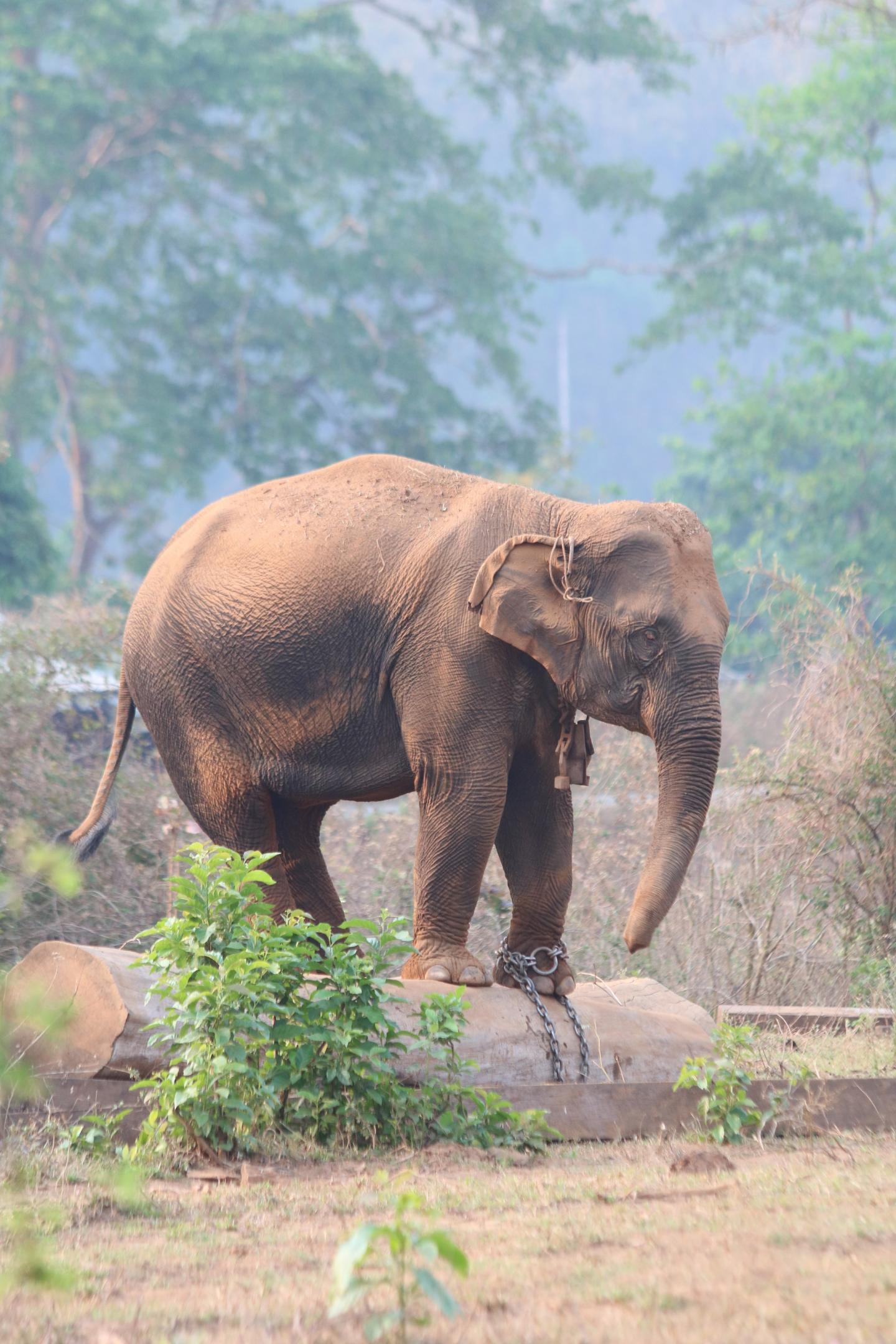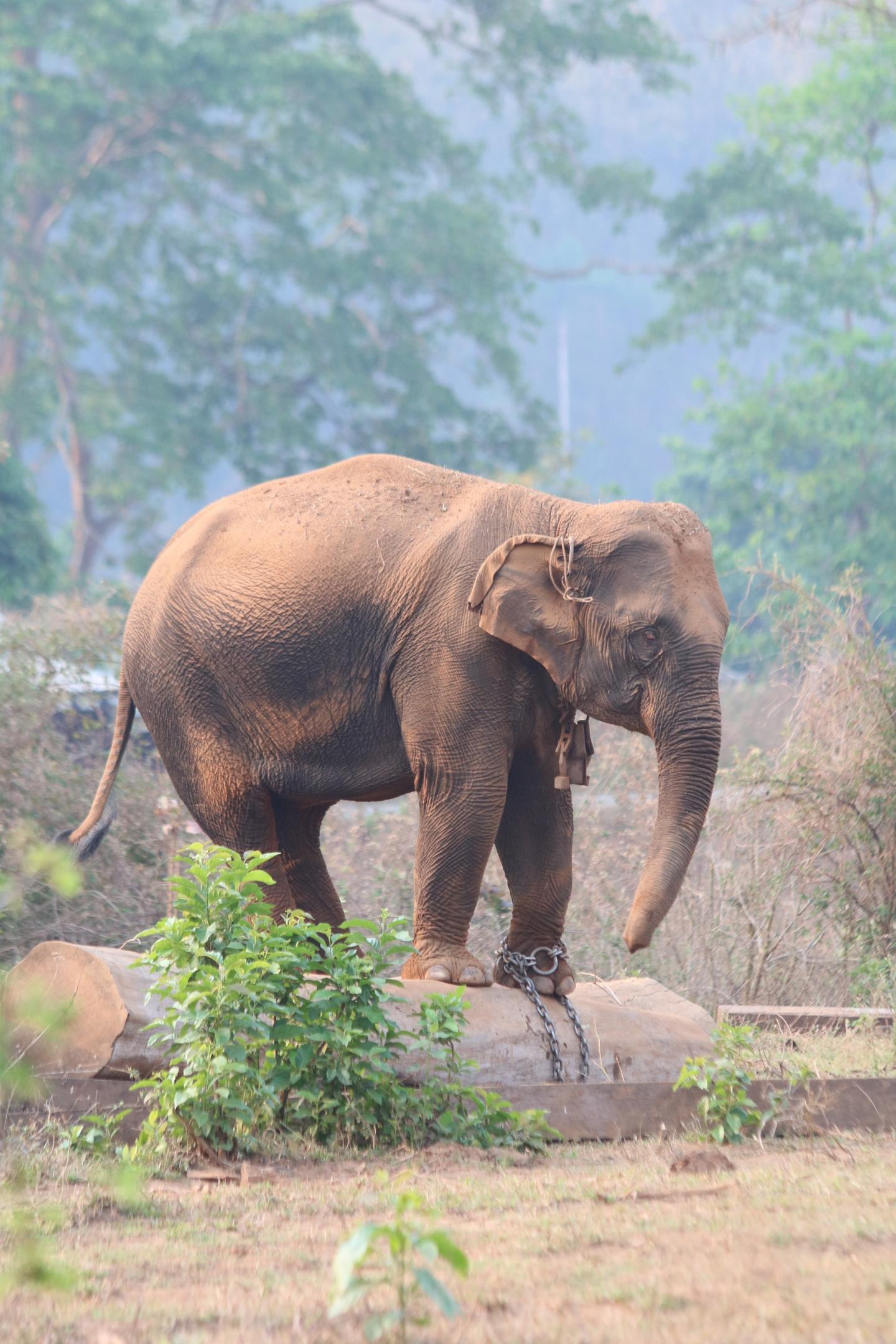
Credit: Virpi Lummaa
The study shows that even years after capture, the mortality rate of wild-caught elephants remains increased, and their average life expectancy is several years shorter than that of captive-born animals. This increases the pressure on free-ranging populations, if captures from the wild continue, and thus could be unsustainable in the long run. Possible differences between captive-born and wild-captured elephants, as revealed by this study, have important implications but are rarely considered in research and conservation programmes. The results have now been published in the scientific journal Nature Communications.
It was already known that elephants living in zoological gardens have a higher mortality rate than when living in the wild. Such a comparison, however, mainly illustrates the differences in diet, social environment, opportunities for exercise and disease patterns between zoos and wild environments. They provide little insight into how the capture of wild elephants might affect their long-term well-being in captivity.
Elephants have been employed in logging camps in Myanmar for centuries. Wild-caught and captive-born animals work and live there side by side in forests and are, generally, tamed with the same methods, live in the same environment and are treated similarly. The detailed records kept by local governments on elephant husbandry provided a rich data set for researchers from the University of Turku, Finland, and the Leibniz Institute for Zoo and Wildlife Research in Berlin, Germany. Based on data stretching back nearly a century and including over 5,000 timber elephants, the researchers analysed elephant survival after capture.
"Our analysis reveals that wild-captured elephants had a lower survival than captive-born elephants regardless of how they'd been captured, whether by stockade of whole groups, lassoing single elephants, or immobilisation by sedation. This means that all these methods had an equally negative effect on the elephant's subsequent life. We also found that older elephants suffered the most from capture; they had a higher mortality than elephants caught at younger ages," says Dr Mirkka Lahdenperä, the lead author of the study.
All elephants face the highest risk of death in the year immediately following capture. Although the risk decreases in subsequent years, these negative effects persist for around a decade, a surprisingly long time.
"We chose to rely on data from timber camps as – their capture aside – both wild-caught and captive-born elephants have very similar life styles. This unique situation allows a comparison between these two groups unbiased by other factors such as diet or exercise," explains Dr Alexandre Courtiol, the scientist leading the analysis of the study.
Both captive-born and wild-captured timber elephants in Myanmar live together in semi-captive populations. They work during the day and are released to the forests during the night to find food on their own, and can then interact with other captive timber elephants as well as wild elephants. Both captive-born and wild-captured timber elephants are subjected to the same governmental regulations concerning monitoring, workload and rest periods – working elephants have holidays, maternity leave and a mandatory retirement age. Both captive-born and wild-caught elephants are tamed and trained before entering the workforce. Wild-captured elephants may, however, be exposed to harsher treatment depending on their age, sex and personality than captive-born calves.
"The long-term overall costs of capture and taming resulted in a median lifespan that is three to seven years shorter than that of captive-born elephants. Capturing elephants to sustain captive populations is, consequently, detrimental, because it not only reduces wild populations of this endangered species, it also cannot provide a viable solution to sustain captive populations in the long run. These wild-caught animals live shorter lives and reproduce poorly in captivity," says the senior investigator of the study, Academy Professor Virpi Lummaa.
Long-term stress due to capture and taming as well as changes in the social environment are potential reasons for the shorter life of wild-captured elephants.
"We ought to find alternative and better methods to boost captive populations of elephants. Even today, over 60 percent of elephants in zoos are captured from the wild and about a third of all remaining Asian elephants now live in captivity," says Lahdenperä.
The results of the study strongly suggest that more studies are necessary to understand and assess how widespread these negative effects of capture are in other species. Whenever capture is unavoidable veterinarians and biologists should work together to ensure the highest welfare standards and improve relevant conservation and management practices. Support and care for the animals is especially critical during the period immediately after capture.
###
The study was funded by the European Research Council, Academy of Finland and Kone Foundation.
The research article* 'Differences in age-specific mortality between wild-caught and captive-born Asian elephants' by Mirkka Lahdenperä, Khyne U Mar, Alexandre Courtiol and Virpi Lummaa was published in Nature Communications (http://dx.doi.org/10.1038/s41467-018-05515-8).
More information:
Dr. Mirkka Lahdenperä (English and Finnish)
Department of Biology,
University of Turku, Finland
tel. +358 50 541 7246, email [email protected]
Academy professor Virpi Lummaa (English and Finnish)
Department of Biology,
University of Turku, Finland
tel. +358 50 4382044, email [email protected]
Dr. Alexandre Courtiol (English and French)
Leibniz Institute for Zoo and Wildlife Research (Leibniz-IZW)
of the Forschungsverbund Berlin e.V.
tel. +49 30 51 68 331, email [email protected]
Media Contact
Steven Seet
[email protected]
49-305-168-125
http://www.fv-berlin.de
Related Journal Article
http://dx.doi.org/10.1038/s41467-018-05515-8





